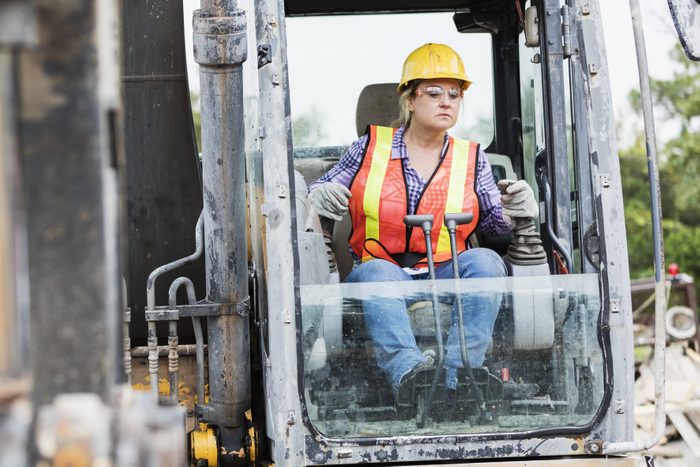How the Construction Industry Can Fill 490,000 Open Jobs

Recruiting more women and young people to the trades may be the key to shrinking construction's alarming labor gap.
Housing affordability is quickly becoming a significant issue in the U.S. To combat the rising cost of housing, the U.S needs a robust and healthy construction industry. But even though the latest reports show hourly earnings for construction workers are climbing faster than ever, the industry still finds itself facing a large and growing labor gap.
Earlier this month, Alicia Huey, first vice chairman of the National Association of Home Builders (NAHB), went before Congress to advocate for one potential solution to the trades’ labor issues: recruiting more women. Currently, women make up just 11 percent of the construction workforce in the U.S.
During her meeting with the House Ways and Means Committee, Huey outlined several steps Congress could take to make the construction industry a better place for women in the workforce.
“Congress should pass the Protecting Worker Paychecks and Family Choice Act, which would expand the Paid Family and Medical Leave tax credit to make it more generous for small businesses and make it more affordable for small businesses to offer paid leave by expanding pooling options,” Huey said.
“Similarly, Congress should ensure that existing tax incentives for employer-provided childcare are flexible for businesses. This will help more women who are currently unable to work to get jobs.”
Increasing female participation in the trades is essential to the industry’s labor shortages. According to the latest employment figures, the construction industry added 36,000 new workers in May but still had a staggering 490,000 open jobs. And even though the month of May saw hourly earnings in construction increase 6.3 percent, companies are still having a difficult time finding workers, particularly with experience.
“Despite steeply rising pay for hourly workers, job openings in construction hit an all-time high at the end of April, while the industry’s low unemployment rate suggests experienced workers are scarce,” said Ken Simonson, chief economist for the Associated General Contractors of America (AGC).
In May 2022, the unemployment rate among jobseekers with construction experience fell to 3.8 percent, almost half what it was the year before. That suggests experienced workers are already working, aging out of construction or moving on to different career paths, leaving the industry desperate for fresh young talent to fill those boots.
“There is no shortage of available, good-paying career opportunities in the construction industry,” said AGC CEO Stephen Sandherr. “Public officials should be exposing people to construction career opportunities that pay well and don’t require a college degree and the debt that all too often comes with it.”


